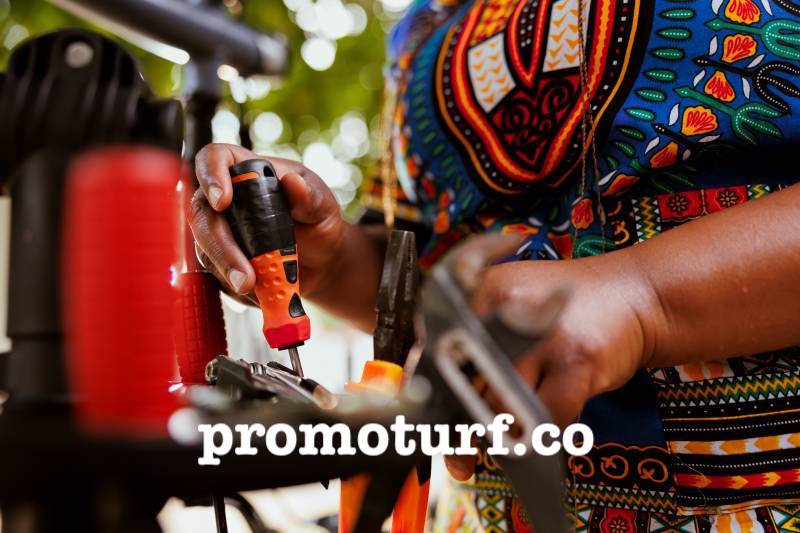Mali’s traditional arts embody its rich cultural heritage, passed down through generations. From intricate textiles to soulful music, traditional arts in Mali showcase creativity and history. These crafts and performances are more than decorative or entertaining—they carry stories, rituals, and values that define the Malian way of life. Exploring traditional arts in Mali offers a deeper understanding of its vibrant culture and history.
The Importance of Traditional Arts in Mali
Traditional arts in Mali play a vital role in preserving history, culture, and identity. They connect communities and celebrate diversity.
A Link to History and Culture
Malian art reflects centuries-old traditions, offering insights into its history, beliefs, and social structures.
Crafts like pottery and weaving demonstrate skills honed over time, maintaining their relevance today.
Fostering Community and Identity
These arts unite communities through shared practices, ceremonies, and values, strengthening their collective identity.
Music and dance often serve as communal activities that celebrate important milestones or spiritual events.
Note: Traditional arts often rely on oral transmission, making preservation efforts critical.
Key Forms of Traditional Arts in Mali
Mali is home to various art forms, each unique in technique and cultural significance.
Music and Dance
Music, like the iconic kora performances, is central to Malian culture, often accompanying storytelling and ceremonies.
Traditional dances express joy, unity, and spirituality, often performed during festivals and important events.
Textiles and Weaving
Mali’s bogolanfini (mud cloth) is renowned for its intricate patterns and natural dyeing techniques.
Weaving and embroidery showcase the creativity and craftsmanship of Mali’s artisans, especially among the Bambara and Dogon people.
Reminder: Support artisans by purchasing authentic handmade items that help sustain their livelihoods.
What Materials Are Used in Malian Traditional Arts?
Malian artisans use natural materials like clay, wood, cotton, and plant-based dyes for their crafts.
These materials highlight sustainability and a deep connection to the environment.
How Are Traditional Arts in Mali Preserved?
Preservation involves teaching younger generations, promoting cultural festivals, and documenting practices for future reference.
Organizations also support artisans through training and access to markets.
Chart: Examples of Traditional Arts in Mali
| Art Form | Description | Cultural Significance | Materials Used |
| Bogolanfini (Mud Cloth) | Handwoven cotton with natural mud dyes | Represents cultural identity | Cotton, natural dyes |
| Kora Music | String instrument played by griots | Preserves oral traditions and history | Calabash, strings |
| Pottery | Handcrafted pots for daily use | Combines utility with aesthetic design | Clay |
| Dogon Masks | Intricately carved masks for rituals | Used in spiritual and ceremonial dances | Wood, pigments |
| Balafon | Wooden percussion instrument | Central to traditional music ensembles | Wood, gourd resonators |
Traditional Arts as a Tourist Attraction
Visitors to Mali often marvel at its vibrant arts, making them a key part of the country’s tourism appeal.
Cultural Festivals
Events like the Festival in the Desert celebrate Mali’s music and dance, drawing global audiences annually.
Tourists gain firsthand experiences of Malian traditions through performances, workshops, and exhibitions.
Artisan Markets
Mali’s markets offer a range of handmade items, including textiles, pottery, and jewelry, perfect for souvenirs.
These markets also provide economic support to local artisans, helping them sustain their craft.
Note: Bargaining is common in Malian markets but always respect the artisans’ effort and skill.
FAQs
- Why is traditional art important in Mali?
Traditional art preserves cultural heritage, connects communities, and showcases Mali’s rich history and identity. - What is bogolanfini, and why is it significant?
Bogolanfini, or mud cloth, is a hand-dyed textile symbolizing identity and storytelling in Malian culture. - How is music integrated into Malian traditions?
Music accompanies storytelling, ceremonies, and social gatherings, serving as a medium for preserving oral history. - Where can I experience traditional arts in Mali?
Visit cultural festivals, local markets, and artisan workshops for authentic encounters with Malian arts. - How can tourists support traditional arts in Mali?
Tourists can support artisans by purchasing handmade items and promoting ethical tourism practices.
How Are Traditional Arts Adapting in Modern Mali?
The integration of traditional techniques with contemporary designs helps keep Malian arts relevant and appealing to wider audiences.
Collaborations with Designers
Artisans collaborate with fashion and home decor brands to introduce Malian crafts to global markets.
These partnerships ensure traditional methods continue to thrive while gaining global recognition.
Digital Platforms
Social media and e-commerce platforms provide artisans with a broader audience, helping sustain their craft in a competitive market.
Through online sales, Mali’s traditional arts reach enthusiasts worldwide.
Conclusion
Traditional arts in Mali are more than just creative expressions—they are living symbols of the country’s rich cultural heritage. From the vibrant rhythms of kora music to the intricate patterns of bogolanfini, these arts connect Mali’s past with its present. By preserving and promoting these traditions, Mali ensures that future generations can continue to celebrate and benefit from this unique cultural legacy. Embracing Malian arts is not only a journey into creativity but also a tribute to the resilience and ingenuity of its people.



